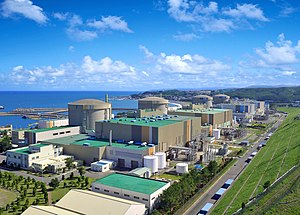Energy in Kiravia

Kiravia is the largest energy consumer in Ixnay and the leading energy importer. Although Kiravia is decently endowed with conventional energy resources, the vast energy demand generated by its large population, advanced economy, and cool climate greatly outstrip domestic supply. Maintaining a reliable energy supply and reasonable prices is a perennial policy concern at the federal level, and a great deal of public expenditure has been dedicated to energy subsidies, energy research, the development of domestic energy sources, and the upkeep of good trade relations with major energy-exporting countries, such as Cartadania and Arcerion.
Kiravia is a world leader in nuclear research (both civilian and military) and has invested extensively in the development of nuclear power to meet its staggering energy needs.
Major fossil fuel suppliers to the Kiravian market include Cartadania and other nations. The most plentiful domestic reserves of oil and gas are located in the Pelian Ocean, offshore from the Sydona Islands and Saxalin Islands, followed by the Albion Sea off of Atrassica and onshore oil shales in Devahoma and the Northwest Territory.
Peat is plentiful across many parts of Great Kirav, particularly the upper and upper-middle latitudes, where it is commonly used as a household fuel source, especially in rural areas. Kiravians traditionally harvested peat from nearby bogs themselves or purchased cut peat bricks or briquettes to be delivered to their homes, practices which continue today. There are also dozens of peat-fired power plants in Kiravia that feed into modern electrical power grids.
General Statistics
In 2030 AD, Kiravia consumed 29,325 TWh of electricity, 40,977 kWh per capita.
Conventional Energy
Base power is dependent on energy from fossil fuels such as coal, oil, and natural gas (as well as peat, which is covered separately).
Nuclear Energy

Kiravia has 70 operating nuclear reactors that generate just over 20% of the nation's electricity.
Fuel
Reactors
Renewable Energy
Energy from renewable sources accounts for a small but growing share of the Kiravian Federacy's total energy production. Renewable enegry development has been encouraged, promoted, and subsidised by the authorities as a way to help stabilise energy prices, reduce dependency on imports, and (as a tertiary concern) increase sustainability. Although the renewable energy sector continues to grow, it has yet to seriously challenge the dominance of fossil fuels in the country's energy market.
Wind energy
Kiravians have been harnassing wind energy for many centuries through windmills. Wind turbines are now a fairly common sight across rural Kirav. Many individual farmsteads and hamlets have their own small wind turbines on site to generate power for internal use and even provide an additional revenue stream. A small wind turbine in Enscirya
Ocean energy
Kiravia has been at the forefront of harnessing energy from waves and tides, aiming to diversify its energy sources and reduce dependency on imported fuels. Various projects and initiatives have been undertaken to tap into the vast potential of the surrounding seas, with PE Adheritus Ilkashvar's Blue Economy Initiative being the largest and most recent on the part of the federal government. Wave energy projects in Kiravian waters involve the extraction of energy from ocean waves, typically through the use of specialized devices such as oscillating water columns or floating-point wave energy converters. Tidal energy works that focus on harnessing the power generated by the rise and fall of tides have also been put into operation: Kiravian companies have deployed tidal stream generators that capture energy from tidal motions off the coasts of Harma, Hanoram, and Argévia.
Solar power
Solar power projects are not considered particularly advantageous in Great Kirav on account of its dismal climate. They are much more viable in Æonara and Sarolasta. A few settlement blocks in Æonara are entirely solar-powered.